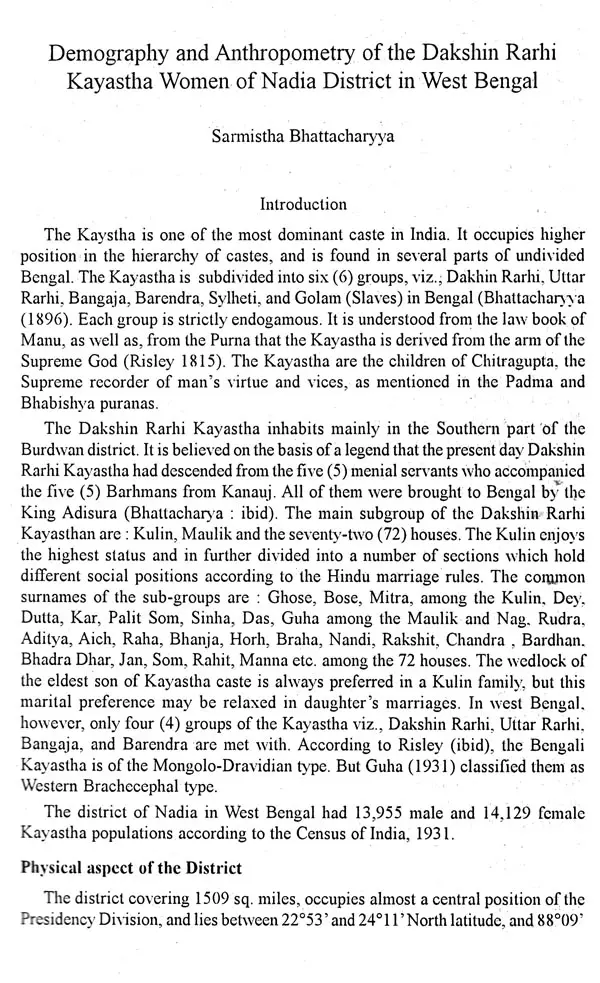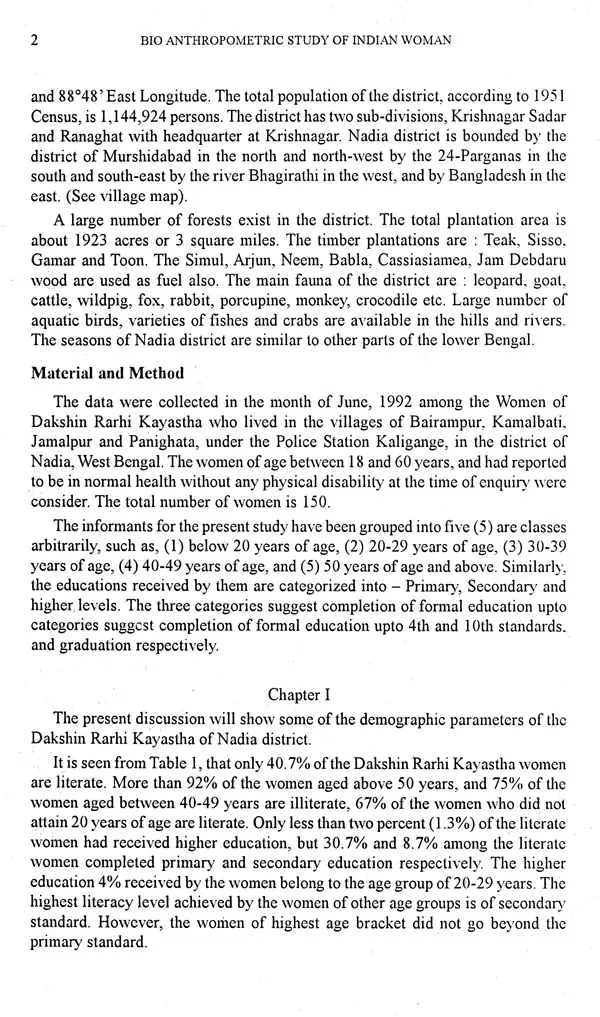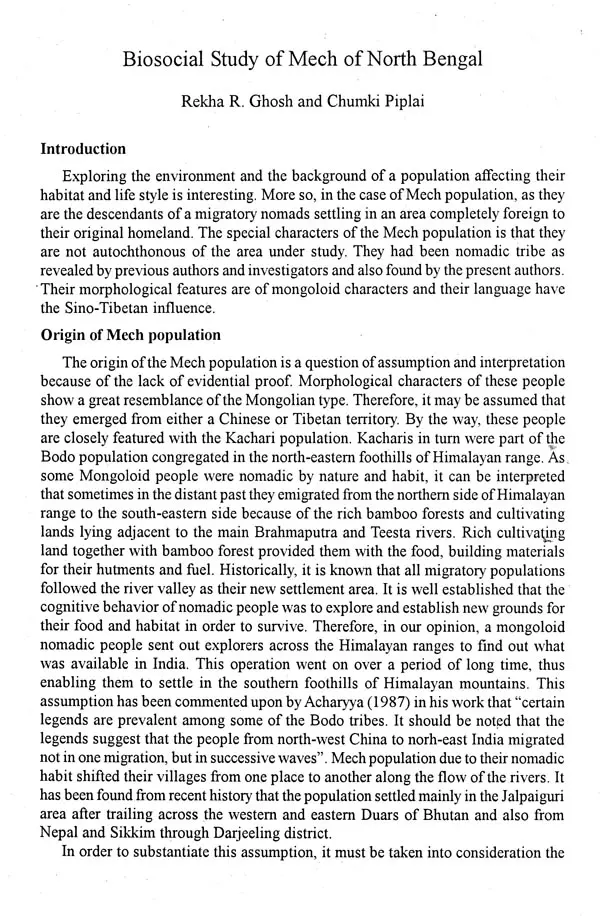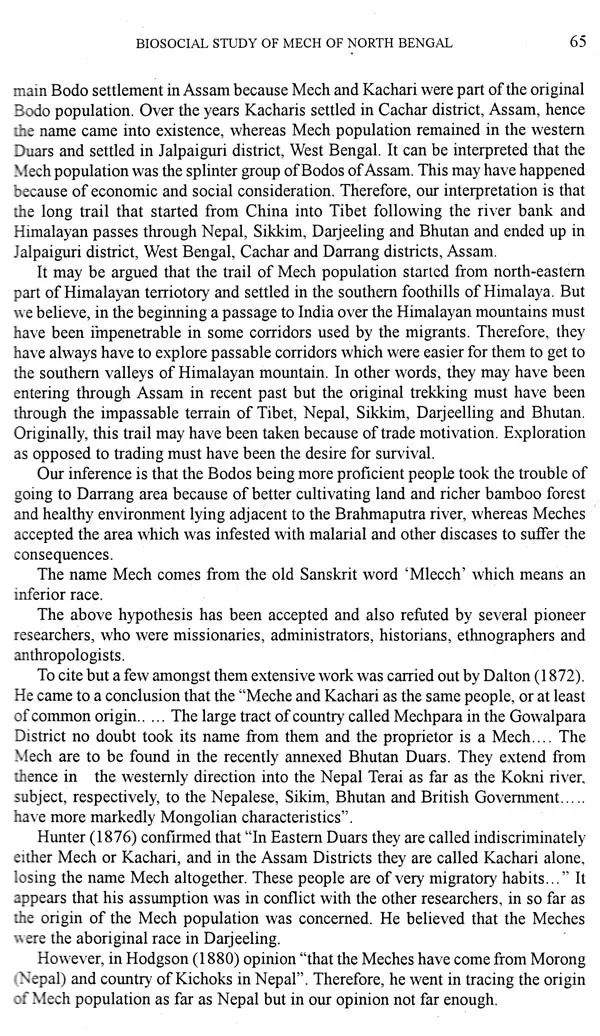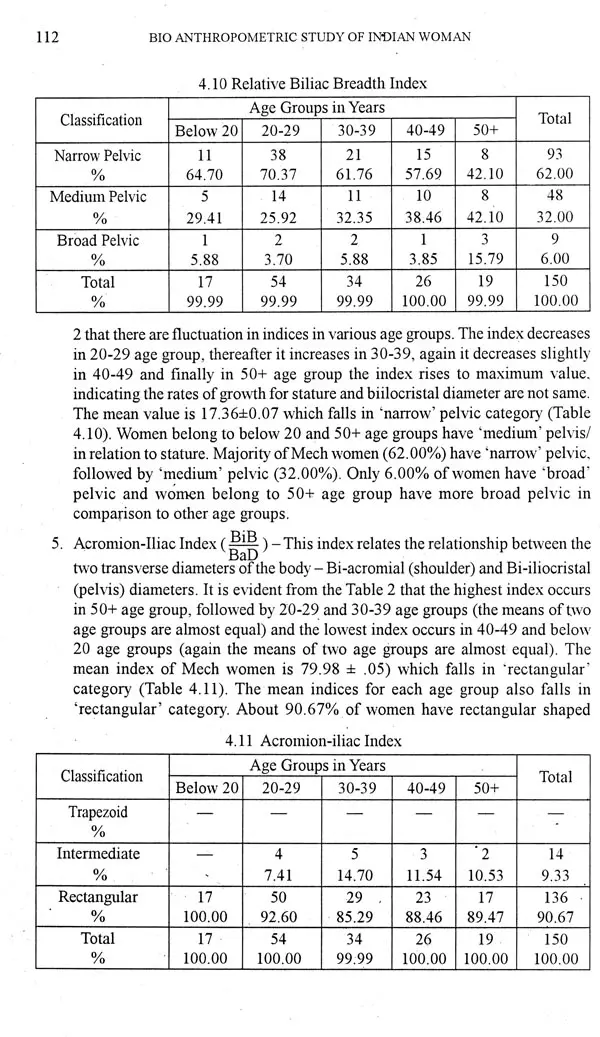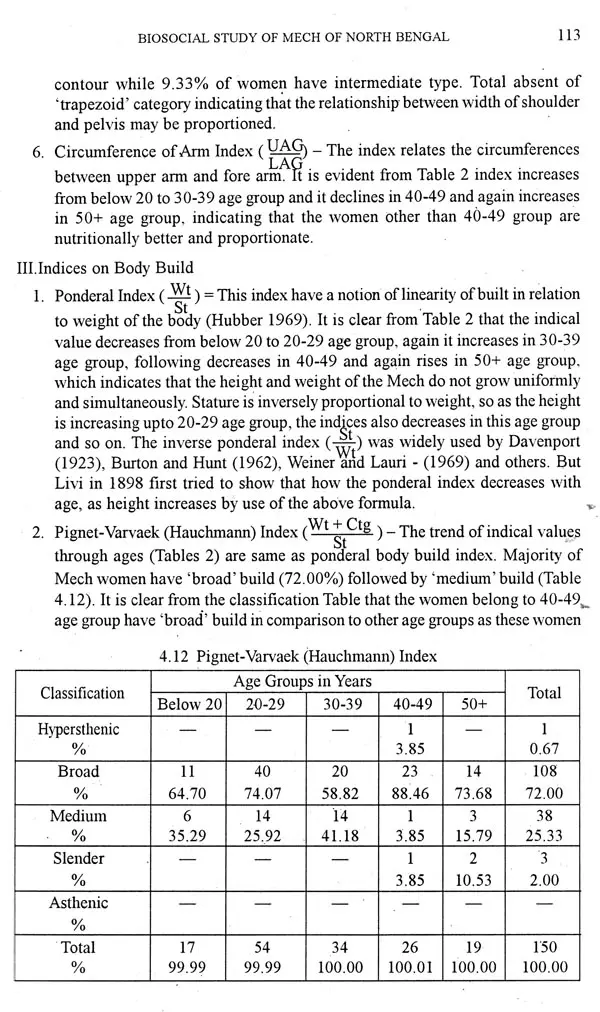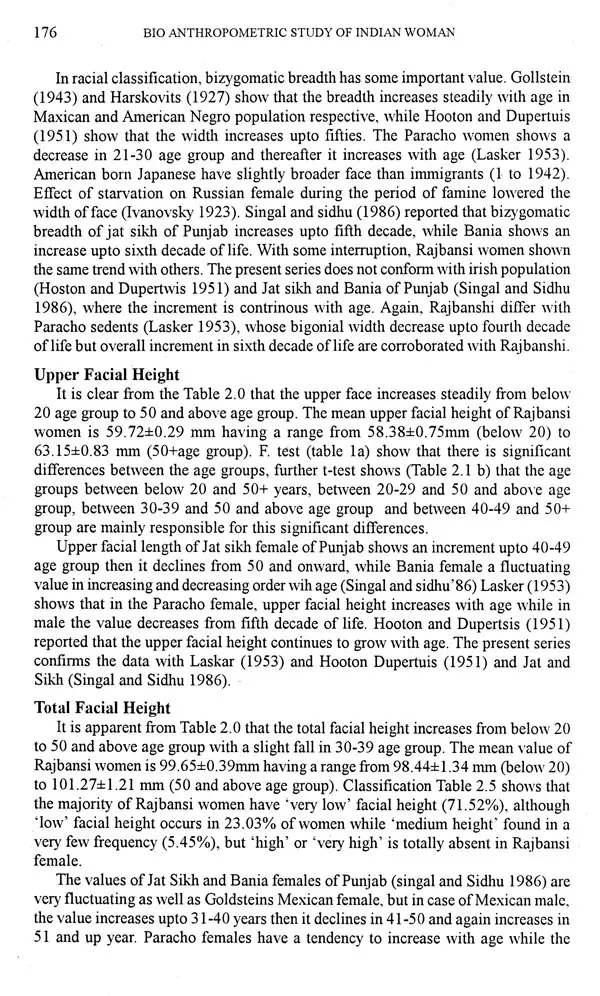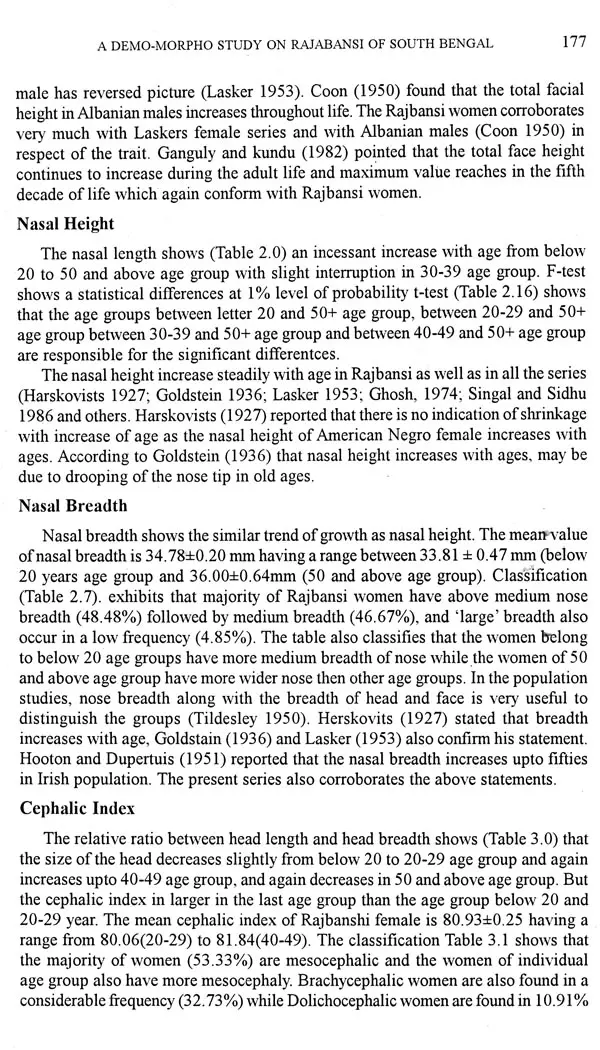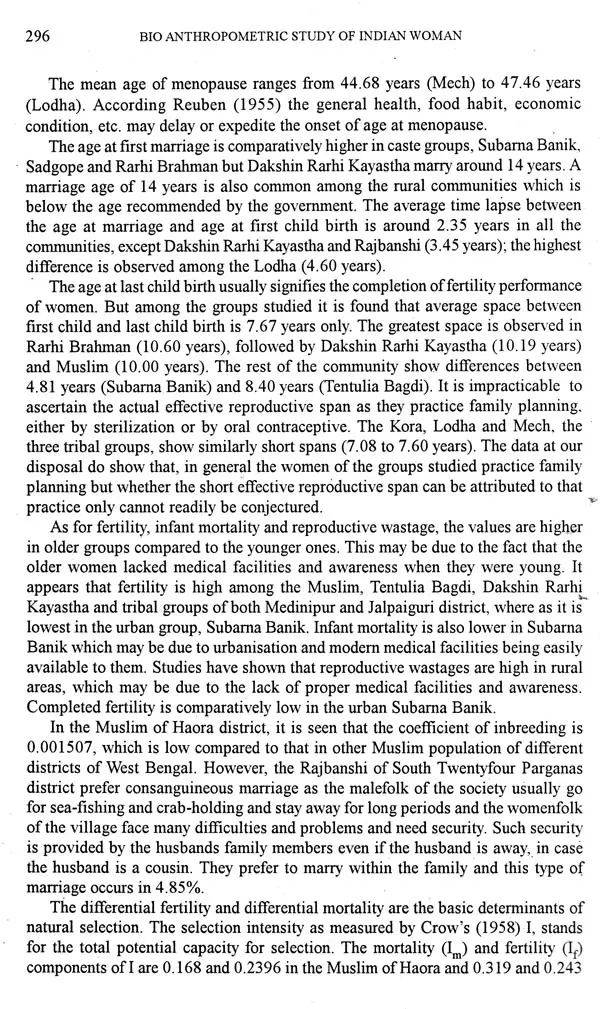About the Book The Unique contribution made by this book entitled "Bioanthropometric Study of Indian Women" is the first systematic attempt of anthropometric study on women only. Previously, in India, the anthropometric studies were conducted on males mainly, while on female it is limited and sporadic. It can provide the dynamic relationship between female physique, biological traits, social and ecological characters. This book contains the findings on ten endogamous populations covering eight districts of West Bengal. Population studies are mainly rural based excepting Subarna Banik of Calcutta. The population are Dakshin Rarhi Kayastha, Rarhi Brahman, Subarna Banik, Sadgope, Lodha, Mech, Rajbanshi, Tentulia Bagdi, Kora and Muslim. The districts covered are Jalpaiguri, Nadia, Birbhum, Medinipore, Hugli, Haora, South Twentyfour Parganas and Calcutta. The results also show the differences in physique and its component parts, growth through ages, culture, education, occupation, economy, climate and temperature. The data pertain cross-sectional materials. The results also show the wide range of variation in morphological characters. The ten endogamous groups of eight districts show both inter and intra- discricts and population variability.
This book will be welcome as an important contribution to the literature on the Physical anthropometry of Indian Women. It will also be of interest to researchers and advance students of biological anthropology, population genetics, physiology, nutrition as well as those involved in formulating public policies that affect women health and welfare.
About the Authors Rekha Rani Ghosh M.Sc and Ph.D in Anthropology from Calcutta University, specialised in Physical Anthropology. Her domain of study was anthropometry, growth study, craniometry, osteology. palaeoanthropology and dermato- glyphics. She has also done the study of human remains (skeletal) from Maski. She has to her credit more than 35 articles published in edited books-both Indian and foreign, and also in Indian and foreign journals. She also published articles in Bengali and Hindi. She also wrote the Life sketch of the Founder Director of Anthropological Survey of India Dr. B. S. Guha. Acted as a National Coordinator for the Project entitled "Bioanthropometric study of Indian Women".
Sikha Chatterjee-M.Sc. and Ph. D in Anthropology from Calcutta University, specialized in Physical Anthropology. Her area of study was on demography, population genetics and molecular biology, craniometry, anthropometry. She has got one book. and more than 30 papers in edited books and in both Indian and foreign journals. She is an active member of several professional and voluntary Institution.
Chumki Piplai - M.Sc. and Ph.D. in Anthropology, from Calcutta University, specilised in Physical Anthropology. Her area of study was on human biological variation and bio- social anthropology, demography, anthropometry, growth study, serology, craniometry and community genetics. She has also done the Jarwa Study in Andaman Island. Her published. research paper is more than 30, published in edited books and in Indian and Foreign Journals. She has also got two books on Jarwa and geneaology in Bengali.
Foreword I am very much appreciated to write a few words by way of introduction to this valuable report on the BIO-ANTHROPOMETRIC STUDY OF INDIAN WOMEN from West Bengal. This report containing ten populations covering eight districts of West Bengal those are least reported. The communities are the Rarhi Brahman and Rarhi Kayastha of Nadia district, the Sadgope of Birbhum. the Subarna-Banik of Calcutta, the Tentulia-Bagdi of Hugli, the Rajbanshi of South Twenty-four Parganas, the Kora and the Lodha of Midnapur, the Meches of Jalpaiguri district and the Bengali Muslim of Haora district. The Project was launched from the year 1990.
Preface Diversities of morphological features of different ethnic groups in India have been studied and mentioned in ancient literatures. But scientific approach to measure the different people in India in order to ascertain affinities among the people of India was initiated by the different authors in the beginning of twentieth century. After that number of studies on anthropometry have come out from time to time. These studies are mainly sporadic, isolated and inadequate sample size. The systematic anthropometric study among the Indian population first organised by Anthropological Survey of India under the Project, "All India Anthropometric Survey" based on male individuals. Thus, the data on female individuals were out from the earlier studies, where as the female constitute roughly fifty percent of the total population. Considering these factors Anthropological Survey of India has undertaken a National Project entitled "Bio-anthropological Study of Indian Women" in the seventh five year plan. This project conceived by Late Dr. K. S. Singh, the then Director General of Anthropometric Survey of India.
Book's Contents and Sample Pages


